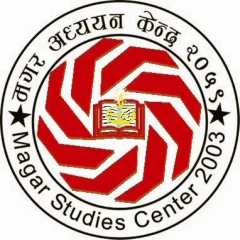Das, Sarat C. (1902). Journey to Lhasa and Central Tibet. John Murray, London, Albemarle Street Annotation by: Dr. Govind Prasad Thapa This book contains details about the journey to Lhasa and Tibet. The writer has mentioned one incident related to Magars. He relates: “It was told of the upper Kangpa-chan valley that it was first peopled by Tibetans called Sharpa (Easterners), whose original home was in the mountains of Shar Khambu, or Eastern Kirata.* Lower down the valley lived the Magar tribe from Nepal, whose chief extended his sway over the Sharpa, and exacted such oppressive taxes from them that they decided to avenge themselves. The Magar chief, going to the village of Kangpachan, he and his followers were murdered, and their bodies buried. No clue could be had of the missing men, so the chief’s wife went herself to Kangpa-chan, but she also failed to discover what had become of them. While going along the river bank, a boulder, undermined by the current, tumbled down, when swarm of flies flew buzzing out. Attracted by this, the queen had the earth removed, and discovered the bodies of her husband and his followers. Returning home with the chief’s body, she ordered great funeral ceremonies to be held at a place some six miles up the river, near the Rapa-chan torrent, midway between the two great villages of the Kangpa-chan valley—Gyunsar and Yarsa,[Yarsa probably means “upper (yar) land (sa).” Yara mara, or yarka marka, meaning “upper and lower,” are terms used throughout Tibet. (W.R.) as being more accessible for the people, for whose entertainment great bowls of wine were to be provided. In the wine poison was mixed; and as soon as the Magars had finished drinking, they passed it to the Kangra-chan people, who drank deeply, and fell asleep to awake no more. Nearly a thousand people were in this way done to death, and the babies were carried away by the queen’s followers. The place where this foul deed was done became known as Tongshong phug, “the place which witnessed a thousand murders.” The few who escaped carried the news to Tibet, and soon returned with a large army to wage war against the Magars. The queen shut herself up in one of her castles, and, though ill-prepared to stand a siege, she and her people defended it for three months. The Tibetans decided to reduce the place by famine and by cutting off the water-supply. Then the queen, to deceive them, opened the reservoir in the castle and let the water flow toward the Tibetan camp; and the enemy, thinking that she must have great store of it and that their attempt was vain, raised the siege, and withdrew to a distance. The queen now attacked them in turn, but fell in the first skirmish, fighting valiantly. The Tibetans finally expelled the Magars from the Kangpa-chan and Tambur valleys, and restored them to their former possessors.” * [The Kirata are well known as a tribe of non-Brahmanical people (Mlecha) in the Veda. See Chr. Lassen, ‘Indis. Alterthumskunde,’ vol. i. p.78: “The land between the San Roci and Kankajji is approximately the same as that of the Kiratas.” A complete discussion on the Kiratas is to be found in ‘Zeitschrift fur Kunde des Morgenlander,’ vol. i. p. 35 ff. See supra, p.—(W.R.)].
